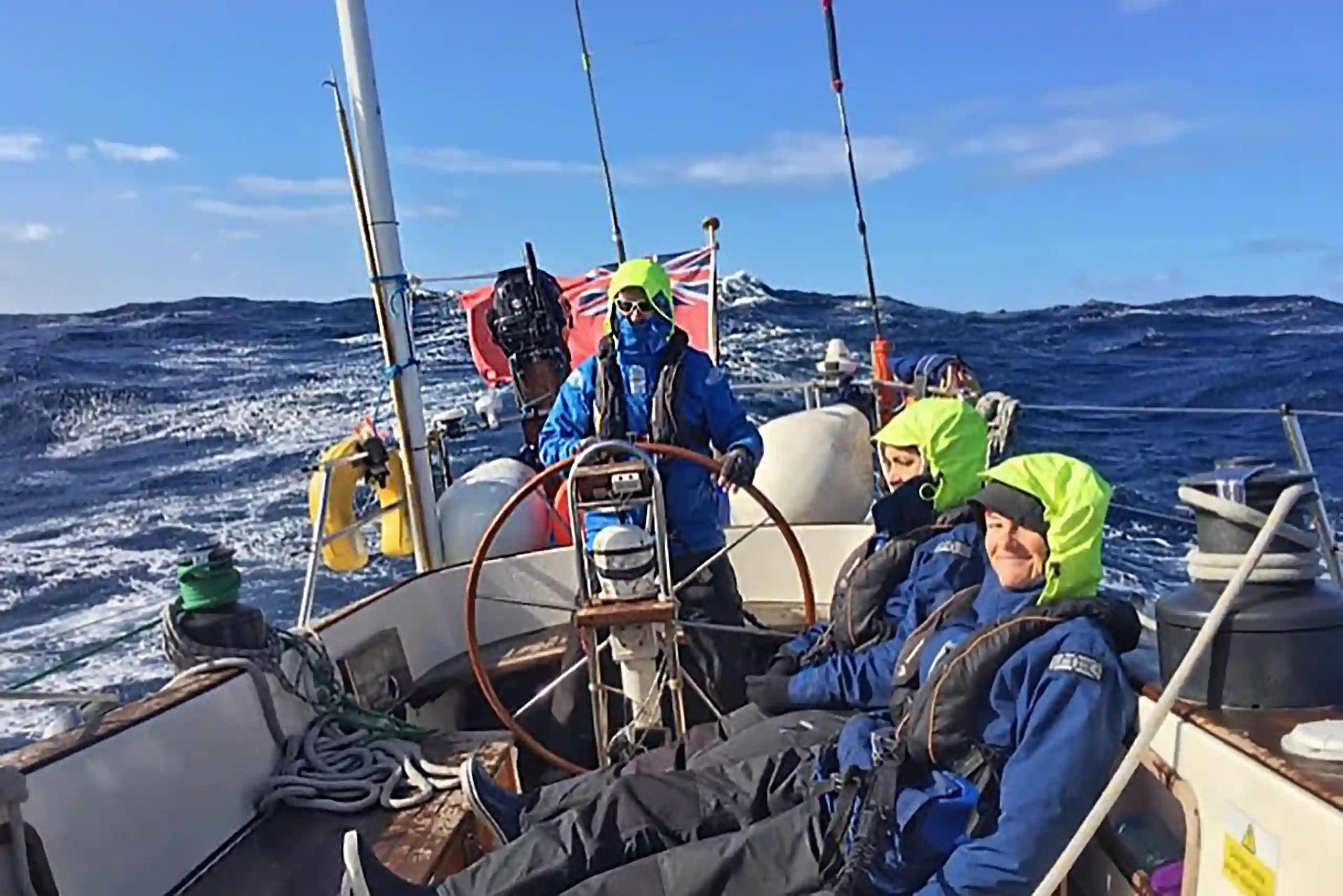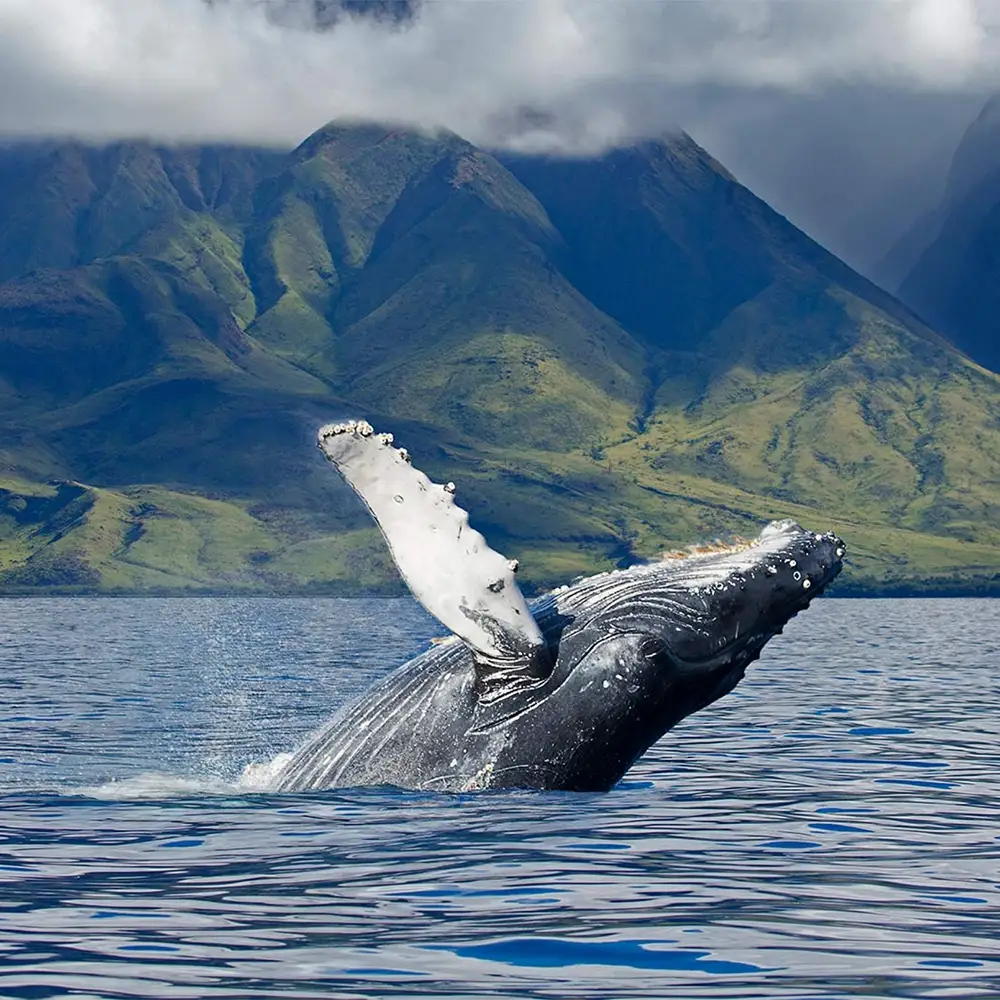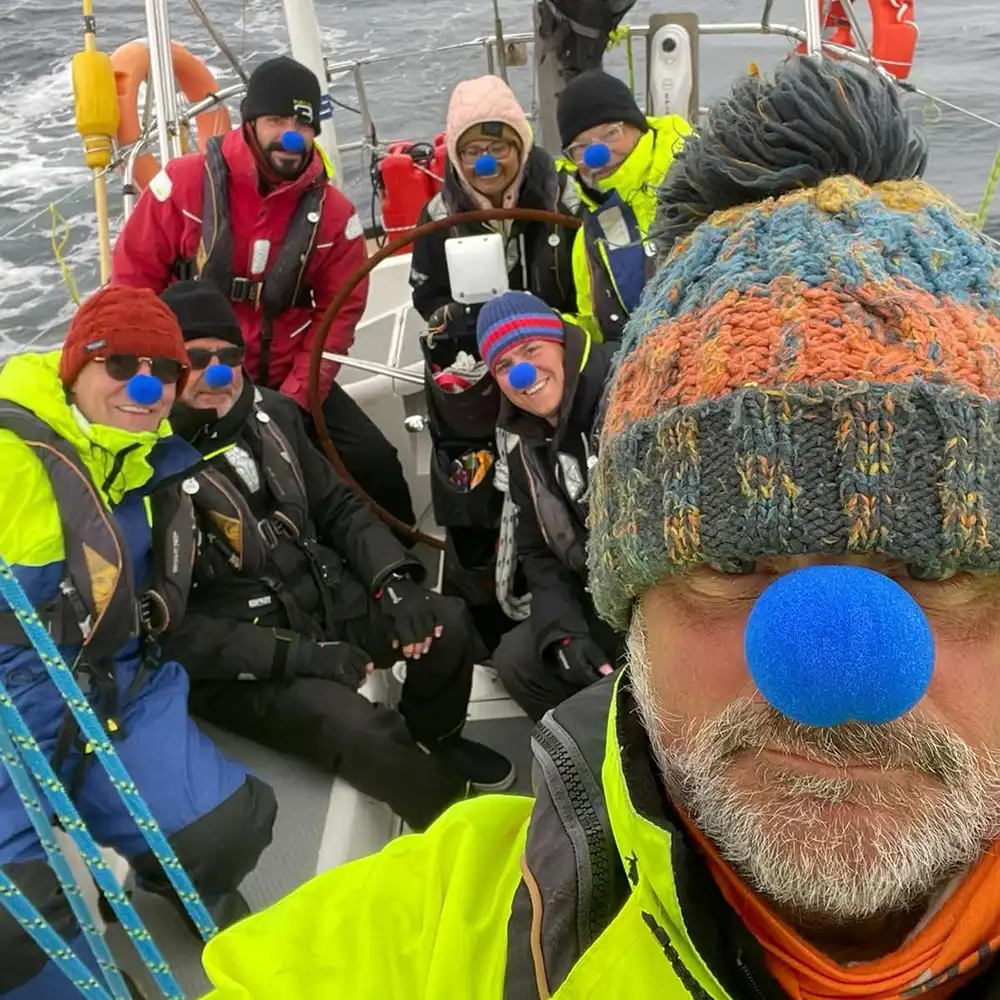Sailing north from the Faroes to Norway is a journey that blends exploration, skill-building, and true high-latitude adventure. A few days training and exploring in the Faroes. A 600-mile offshore passage across the Arctic Circle. Landfall in one of the most spectacular coastal regions on Earth. Every year, the experience is different, shaped by the wind, the sea, and the sheer scale of the landscape. Here’s a rough guide to what to expect.
Tórshavn & the Northern Faroes
We begin in Tórshavn, the tiny capital of the Faroe Islands. Nestled between steep hills and the sea, it’s a mix of old-world seafaring charm and Nordic modernity, where turf-roofed houses stand beside cafés filled with the smell of freshly baked cinnamon buns. This is where the crew comes together, gear is stowed, and the first sailing drills begin.

For the next two to three days (weather depending), we train and explore the remote northern isles: Kalsoy, Kunoy, and Viðoy, where sheer cliffs drop into the North Atlantic, seabirds swirl overhead, and villages of just a few dozen people sit tucked beneath mountains. If conditions and time allow, we may get to hike to the James Bond tomb and one of the most breathtaking views in the Faroes – a thin ridge of land dropping away to the sea on either side marked by Kallur Lighthouse.

The sailing here is spectacular. Narrow passages between islands, powerful tidal currents, and the chance to really sharpen our skills before heading offshore. Throughout, we’ll be keeping an eye on the weather, waiting for the right conditions to begin the long sail north.
600 Miles to Arctic Norway: Life at Sea
When the time comes, we set a course for Norway, more than 600 miles across the Norwegian Sea. The Faroes disappear behind us, and the vastness of open ocean takes over. This is where offshore sailing truly begins. For the next four to five days, the boat runs on a watch system: usually three hours on, six off. Each crew member takes turns at the helm, trimming sails, navigating, and keeping lookout. The ocean dictates everything. One day may bring fast downwind sailing under full sail, another may be a battle against headwinds and heavy seas, and sometimes, the wind fades to nothing, leaving us drifting under a sky that never fully darkens.

The further north we go, the colder the air feels, the Gulf Stream giving way to Arctic waters. But below deck, the heating kicks in, keeping the cabin warm. The galley is always busy with someone cooking up a hot meal, another making tea, while the smell of fresh bread (if you’re lucky!) drifts through the boat.
Wildlife here is everywhere. Whales and dolphins are common, sometimes racing alongside the boat or surfacing in the distance, their breath misting against the horizon. Seabirds follow us for miles, riding the air currents above the mast.

Crossing the Arctic Circle
Somewhere in the open ocean, we reach 66°33′ North – the Arctic Circle. For sailors, this is a very rare and highly prized milestone, marked by an old naval tradition: The Order of the Blue Nose. Those who have never crossed before are officially welcomed into the Arctic, an event typically involving some lighthearted maritime rites, a toast to King Neptune, and a moment to take in the vastness of where we are From this point on, the days feel endless. Even at midnight, the Sun barely drops below the horizon, casting a golden and sometimes haunting light over the sea at all hours.

Landfall in Arctic Norway
Then, after days at sea, the first sight of land: Norway’s wild northern coastline, rising from the sea like something from another world. Towering peaks plunge straight into deep fjords, small red fishing cabins dot the shore, and the light never quite fades. We navigate our way up one of the most breathtaking coastlines in the world. It’s a world of islands, fjords, and mountains shaped by ice and sea. The landscape is ever-changing. Deep, silent anchorages, narrow channels winding through steep cliffs, and tiny fishing villages where life moves at the rhythm of the tides.
It’s a fitting end to an extraordinary journey, from the volcanic cliffs in the Faroes to Arctic waters under the Midnight Sun, all reached under sail.

You don’t need prior offshore experience – just a sense of adventure. Whether you’re a seasoned sailor or taking on high-latitude sailing for the first time, you’ll be fully involved from the moment we leave Tórshavn. From plotting our Arctic Circle crossing to standing watch on the open sea, every crew member plays a part. Solo sailors are always welcome. Many come alone and leave with lifelong friends.